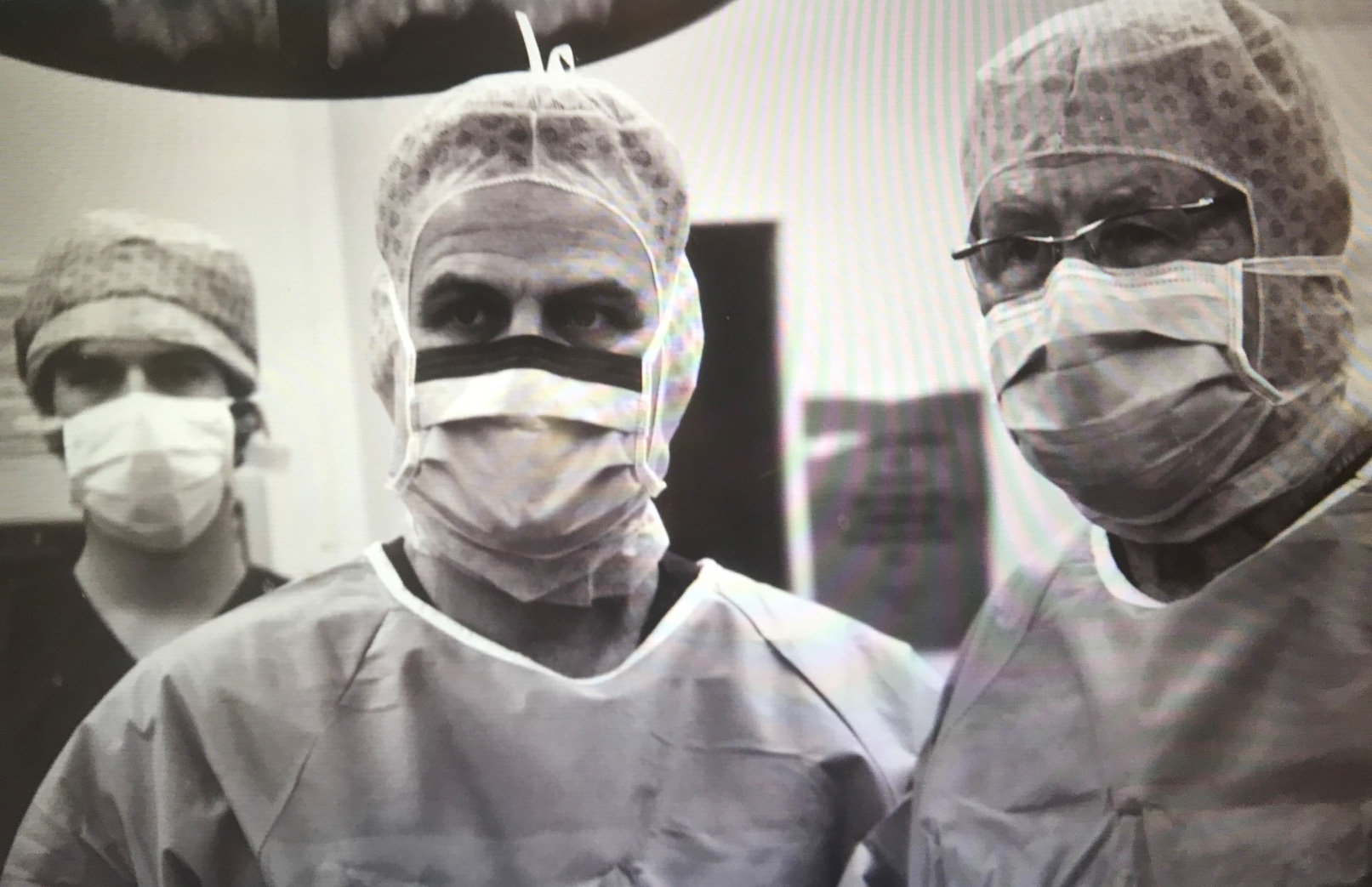First day, last day...
Mervyn Cross OAM
First published June 2022 in the 2022 Winter edition of the AOA Bulletin. Dr Cross passed away August 25 2023.
It’s just on 11 years since I retired. As I reflect on my career of service in the field of orthopaedics, I’m reminded of what my grandfather told me when I was young boy. He said, “Always be thorough in everything you do, young Mervyn”. Never were those words more relevant to me as to when I applied them in the field of medicine. I always felt it an honour to be chosen by my patients as their doctor and, in every instance, I did my best no matter how difficult the circumstances. The support of my wife, Virginia, for the past 57 years has been paramount to my success.
My first day in private practice was in 1974, some 48 years ago. Virginia and I, together with our three young children at the time, had returned to Sydney after completing my fellowship year in the USA at the Hughston Clinic in Columbus, Georgia. We had very little money and a hefty mortgage on a small house in a relatively new suburb called Forestville. The bills were mounting up and I needed to commence my orthopaedic practice ASAP and find a hospital in which to work. Private hospitals were the only option back then, as public hospitals, especially teaching hospitals, were beyond my reach at this stage of my career.
Luck plays a big role in our lives, and I’ve had my fair share. One of the first occasions I experienced this ‘luck’ was when Dr Barry Bracken decided to take a year’s sabbatical, and he asked me to do a locum for a year as his replacement at his practice in Frenchs Forest. This good fortune meant that I did not have to find a surgery/office or a secretary, or a referral base.
In Australia in the mid 1970s, doctors were appointed to the public hospitals as ‘honorary appointments’, “thus receiving no base income”. There was a ‘Means Test’ for patients in hospital and doctors could charge ‘intermediate patients’, worker’s compensation and traffic-accident patients. Australian insurers, such as HCF and MBF, covered patients who needed to have their choice of a doctor. Public patients attended outpatients and were allotted a doctor from the hospital.
Private hospitals were ‘Cottage hospitals’ with no intensive care or medical residents. Surgeons in the 1970s in the main needed their own instruments, which they carried in a special bag. Dr Bob Tinning had four large trays of ‘Charnley’ instruments that he carried from hospital to hospital, and he shared those with me. No teaching or public hospital had these instruments. There were no power instruments. We used hand saws and removing the femoral head was done with a Gigli saw. The price charged for a specialist surgical consultation was $13.80 back in 1975.
Performing the first operation on your own private patient was associated with great trepidation. I had learnt much overseas and there were new procedures and approaches to attempt.
I was most fortunate to have a wonderful career. The timing of my fellowship in 1974 and my retirement 37 years later meant I was a part of many exciting developments in orthopaedics, in particular knee arthroscopy, ACL reconstructive surgery and knee arthroplasty.

In 2011, I needed surgery on my right shoulder from an old surgical reconstruction from fifty-one years earlier. This was the moment I decided to retire. Walking away from something that I loved was not easy, but wrapping up my practice was made easier due to the fact that we had a terrific group of talented surgeons in our group at North Sydney Orthopaedics and Sports Medicine. Many of these fine people I had taught. It was a chance to reflect on just how critical the passing on of knowledge is in our profession. I really enjoyed the time I dedicated to teaching.
My last operating day consisted of 11 arthroscopic procedures in the Mater Day Surgery clinic in North Sydney, Australia. Virginia had never seen me operate in all our time together, so I thought it would be fitting for her to be present and observe. My second-eldest son, Tom, who is a sport and exercise medicine specialist, assisted me along with my grandson, Matthew, a medical student who was observing (see photo). Three generations, all there for my final time with tools in hand, as I conclude the 11th and final procedure that day; I could still hear those wise words again from my grandfather and figured he would be proud to see all of us there together.
Orthopaedics has been especially kind to me, and AOA has always been a leader in innovation and research, creating an example for other specialist organisations to follow.
It has been an absolute pleasure to be a member and to be of service to all those that needed treatment and care.